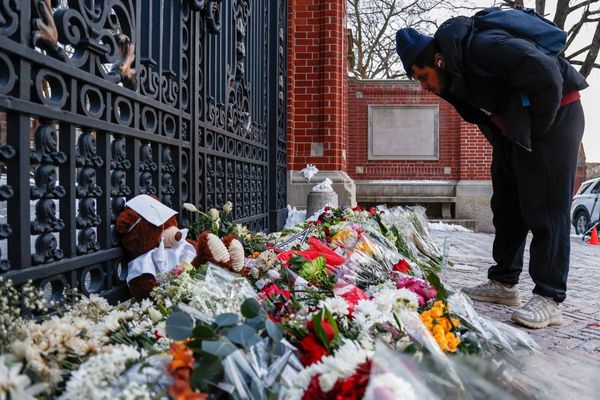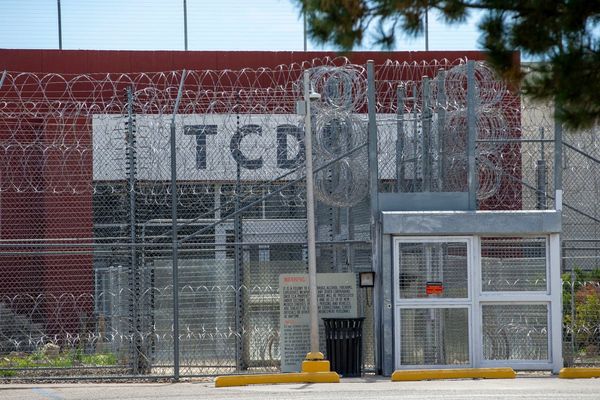
- The Supreme Court has decided that President Trump’s firings of government agency members will stand as the cases work their way through the lower courts, giving the president unfettered power to oust regulators without good cause. However, the court spared the Federal Reserve in the ruling, writing that the Fed is uniquely situated and unlike other government agencies. Justice Elena Kagan sharply dissented, writing that the court’s ruling was “nothing short of extraordinary.”
A landmark Supreme Court decision has challenged 90 years of precedent by handing President Trump the power to fire the heads of government agencies, while sparing the Federal Reserve.
The majority determined that members of the Federal Reserve’s Board of Governors and other members of the Federal Open Markets Committee were off limits to Trump. The ruling states the Federal Reserve is a “uniquely structured, quasi-private entity that follows in the distinct historical tradition of the First and Second Banks of the United States.”
President Trump has publicly threatened Federal Reserve Chair Jerome Powell multiple times over the Fed’s approach to interest rates. Earlier this month, Trump called Powell a “FOOL, who doesn’t have a clue” on social media platform Truth Social after the Fed held interest rates steady. Trump has also speculated back and forth about whether he would fire Powell, at one point claiming: “If I want him out, he’ll be out of there real fast.”
However, Powell’s term as chairman ends next May, and he has indicated that he will complete his tenure. Firing him would likely ignite prompt instability in the bond market, which has seen 30-year Treasury yields rise above 5% annually. The rising yields, which means bond prices are falling, signals major risk, which is precisely what happened when Trump unveiled his “Liberation Day” tariffs in April before pausing them.
Even without the Supreme Court specifically carving out the Fed in its ruling, Trump might have kept Powell around because the chairman could be a convenient fall guy if Trump’s tariff policy threw the country into a recession, Robert R. Johnson, a finance professor at Creighton University, told Fortune this month.
“My belief is that Trump’s criticism of Fed Chair Jerome Powell is an example of Trump setting up the scenario of ‘heads I win, tails you lose,’” Johnson said. “That is, according to Trump, if the economy performs well his tariff policies and his general handling of the economy will be the reason. If the economy suffers a recession, then it is Powell’s fault.”
Agency Firings
The inciting reason for the court’s ruling this week was a challenge over Trump’s ousting of Gwynne Wilcox of the National Labor Relations Board and Cathy Harris of the Merit Systems Protection Board. Both agencies are considered independent, meaning members serve until their terms are up and can only be removed for issues such as misconduct or breach of duty. Trump fired Wilcox in January and Harris in February.
Harris and Wilcox both sued the Trump administration over their dismals, and the D.C. Circuit Court of Appeals ruled to reinstate both. Two days after the reinstatement ruling however, the Supreme Court blocked the move.
The Thursday ruling granted a stay that will allow Trump’s firings to stand while the case works its way through lower courts. Therefore, at least temporarily, Trump can fire officials without cause, which breaks with 90 years of historical precedent established by a 1935 case known as Humphrey’s Executor v. United States.
Justice Elena Kagan, joined by Justices Sonia Sotomayor and Ketanji Brown Jackson, issued a sharp dissent to the majority’s ruling.
Kagan wrote that the two boards at issue in the case are similar to the Federal Communications Commission and the Federal Trade Commission—and the Fed.
“Congress created them all, though at different times, out of one basic vision,” Kagan wrote. “It thought that in certain spheres of government, a group of knowledgeable people from both parties—none of whom a President could remove without cause—would make decisions likely to advance the long-term public good.”
What Trump has done is “take the law into his own hands,” wrote Kagan. No president since the 1950s has tried to just remove an officer from an independent agency and the majority’s ruling has effectively “bless[ed] those deeds.” Under the law, Trump has to have good cause to fire Wilcox and Harris, and he admitted he didn’t have it, Kagan wrote.
Therefore, granting Trump’s order for a stay “is nothing short of extraordinary,” she wrote.
“What matters, in other words, is not that Wilcox and Harris would love to keep serving in their nifty jobs,” the dissent states. “What matters instead is that Congress provided for them to serve their full terms, protected from a President’s desire to substitute his political allies.”
She also criticized her colleagues for exempting the Fed—likely a decision meant to keep the stock and bond markets from tanking
“If the idea is to reassure the markets, a simpler—and more judicial—approach would have been to deny the President’s application for a stay on the continued authority of Humphrey’s,” wrote Kagan.







